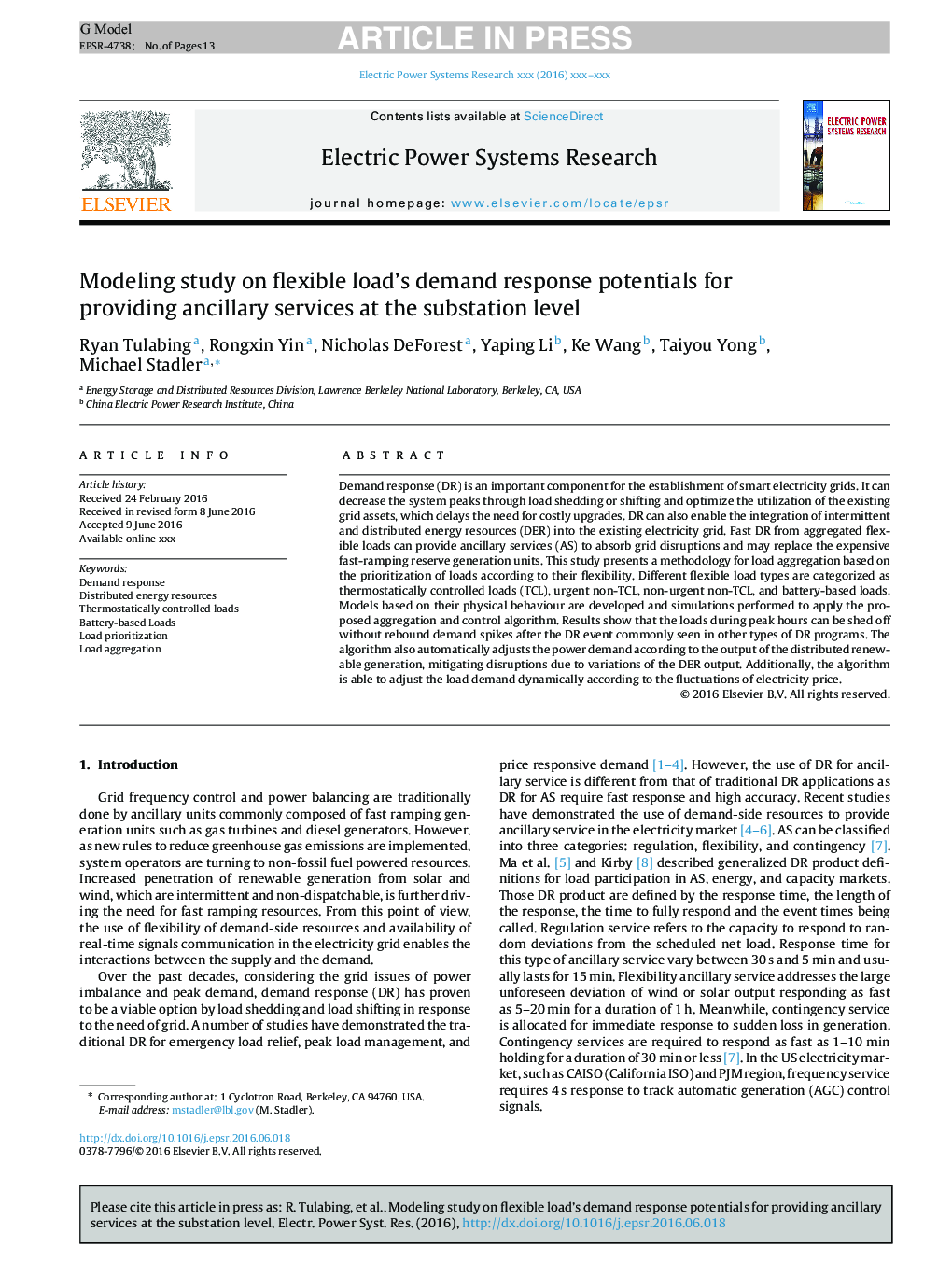| Article ID | Journal | Published Year | Pages | File Type |
|---|---|---|---|---|
| 5001344 | Electric Power Systems Research | 2016 | 13 Pages |
Abstract
Demand response (DR) is an important component for the establishment of smart electricity grids. It can decrease the system peaks through load shedding or shifting and optimize the utilization of the existing grid assets, which delays the need for costly upgrades. DR can also enable the integration of intermittent and distributed energy resources (DER) into the existing electricity grid. Fast DR from aggregated flexible loads can provide ancillary services (AS) to absorb grid disruptions and may replace the expensive fast-ramping reserve generation units. This study presents a methodology for load aggregation based on the prioritization of loads according to their flexibility. Different flexible load types are categorized as thermostatically controlled loads (TCL), urgent non-TCL, non-urgent non-TCL, and battery-based loads. Models based on their physical behaviour are developed and simulations performed to apply the proposed aggregation and control algorithm. Results show that the loads during peak hours can be shed off without rebound demand spikes after the DR event commonly seen in other types of DR programs. The algorithm also automatically adjusts the power demand according to the output of the distributed renewable generation, mitigating disruptions due to variations of the DER output. Additionally, the algorithm is able to adjust the load demand dynamically according to the fluctuations of electricity price.
Related Topics
Physical Sciences and Engineering
Energy
Energy Engineering and Power Technology
Authors
Ryan Tulabing, Rongxin Yin, Nicholas DeForest, Yaping Li, Ke Wang, Taiyou Yong, Michael Stadler,
